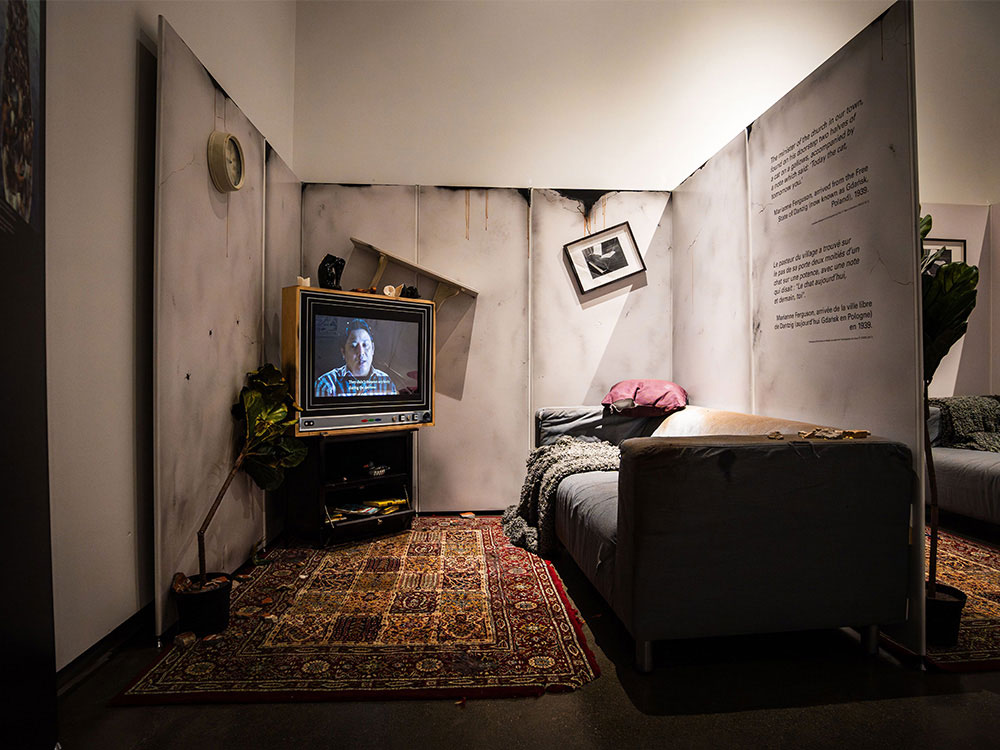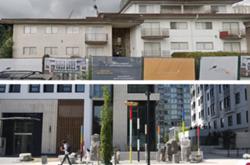Refuge Canada, an interactive exhibition that uses images, soundscapes, first-person accounts and artifacts, recently opened at the Museum of Vancouver. As Canadians become increasingly aware of the current global refugee crisis, the exhibition is an opportunity to gain historical context as it moves through waves of refugees arriving in Canada from the Second World War era up to present day. It portrays the darker chapters of history and the accounts of shattered lives alongside hopeful stories of optimism and success.
Created by the Canadian Museum of Immigration at Pier 21, Refuge Canada started travelling across Canada after its initial debut in 2018. We sat down with the exhibition’s curator, Dan Conlin, to learn more about Refuge Canada and its exploration of Canada’s mixed record in welcoming refugees.
The Tyee: Why did you and the Canadian Museum of Immigration at Pier 21 want to create something focused on refugees and on Canada’s history of welcoming them?
Dan Conlin: The rising number of refugees has created a need for awareness and education about the experience of refugees and Canada’s track record in handling past refugee crises. We felt an exhibition could play an important role in challenging the many misconceptions about refugees, such as the belief by many that Canada has always welcomed them, and the belief by others that refugees are a drain on Canada.
Tell us about the consultation process you went through with refugee groups when developing the exhibition.
We consulted with a mix of refugees, refugee advocates and scholarly experts. We had an in-person workshop to share stories, test ideas and develop themes which was followed by one-on-one collaboration. This produced the core structure that you see in the exhibition: life before, persecution, fear, escape, displacement, Canada’s place in the international system, and life in Canada. We also developed a specific partnership with a Rwandan group to help us explore loss through the case study of refugees from the genocide against the Tutsis in Rwanda. This consultation gave us valuable approaches such as the use of first-person accounts, the importance of agency in refugee decision-making, and the need for myth-busting in confronting refugee stereotypes.
When you were researching the exhibition, what was something you found surprising?
I was moved and surprised by people’s memories, still vivid and detailed years later, about the former homes and careers they had to flee because of war and persecution and their vivid, often frightening but sometimes inspiring memories of their experiences in escaping.
Some of the stats that emerged were also surprising, such as the small but regular number (about 100 annually) of people who flee from Canada citing persecution in refugee claims in other countries — a reminder of the difficulty in assessing an entire country as “safe” without considering individual circumstances.
Is there a particular story that stands out to you?
I was touched and haunted by the tragic account of Timi Kurdi of Coquitlam who was trying to get her family members out of the Syrian Civil War and to Canada, only to have two nephews and her sister-in-law drown while seeking refuge in 2015. The images of her nephew Alan Kurdi became headlines and inspired many Canadians to assist with sponsoring Syrian refugees. Timi Kurdi helped us develop this part of the exhibition and I am still touched and troubled by the burden she and her family carry.
The exhibition is very interactive, with an inflatable boat and a UN High Commissioner for Refugees tent, as well as interactive video displays and questions throughout. Why did you choose to design the exhibition this way?
We always seek creative ways to engage visitors, to sometimes surprise and challenge them, which was especially important in this exhibition where we are trying to make Canadians think about the experiences of refugees. We were fortunate that the first-person stories and consultation with refugee advocates gave us some powerful ideas that visitors can see in this exhibition.
How much of the exhibition has changed over time, related to the shifts in the refugee crisis?
We have updated images and numbers in the exhibition to reflect the increasing scale of the refugee crisis and the new countries affected. A very sobering fact is the rise in numbers of refugees and displaced people worldwide — 65.6 million when we first wrote the exhibition in 2018, 108.4 million this year with our latest update. The core ideas of the exhibition have proved sound and continue to relate well to shared experiences of different waves of refugees new and old.
Tell us about the decisions around including elements that may have the potential to be retraumatizing for refugees. What is in place to support people in those positions?
We sweated over these decisions, but felt it was important to convey the reality of violence, fear and loss experienced by so many refugees. We reviewed our choices with visitors and our own staff from refugee backgrounds during the final selection and fabrication of the exhibition.
We included a warning at the start that portions of this exhibition contain graphic images of violence. We’ve relied on people’s own judgment about trauma for themselves and their families. That approach seems to have been successful based on all reports from our museum hosts so far and our own experience in first presenting the exhibition in 2018.
What do you hope people in Vancouver will take away after visiting Refuge Canada?
All Canadians benefit from a better understanding of the experiences of refugees, the challenges they face, and Canada’s historical track record of responding to refugees — which is far more mixed than most Canadians realize. We have heard from many refugees who appreciate seeing aspects of their experience recognized and many Canadians have told us they appreciate the “myth-busting” in the exhibition that challenges common misconceptions. An important idea that we hope people will walk away with is that no one wants to be a refugee and anyone could become a refugee.
Sometimes it seems like the refugee situation may seem hopeless. However, in large refugee crises in the past, such as the massive displaced person crisis after the Second World War or in the post-Vietnam War exodus from Southeast Asia, Canadians played an important role in longer settlement. All Canadians can make themselves informed in constructive ways to respond to the challenges faced by refugees. Today, any five eligible Canadians can sponsor a refugee and all Canadians can provide a welcome in ways large and small to newcomers.
'Refuge Canada' is on display at the Museum of Vancouver through Feb. 2, 2024. For more information on 'Refuge Canada' and other exhibitions at the MOV, visit the museum’s website. ![]()
Read more: Rights + Justice
This article is part of a Tyee Presents initiative. Tyee Presents is the special sponsored content section within The Tyee where we highlight contests, events and other initiatives that are either put on by us or by our select partners. The Tyee does not and cannot vouch for or endorse products advertised on The Tyee. We choose our partners carefully and consciously, to fit with The Tyee’s reputation as B.C.’s Home for News, Culture and Solutions. Learn more about Tyee Presents here.

















Tyee Commenting Guidelines
Comments that violate guidelines risk being deleted, and violations may result in a temporary or permanent user ban. Maintain the spirit of good conversation to stay in the discussion and be patient with moderators. Comments are reviewed regularly but not in real time.
Do:
Do not: